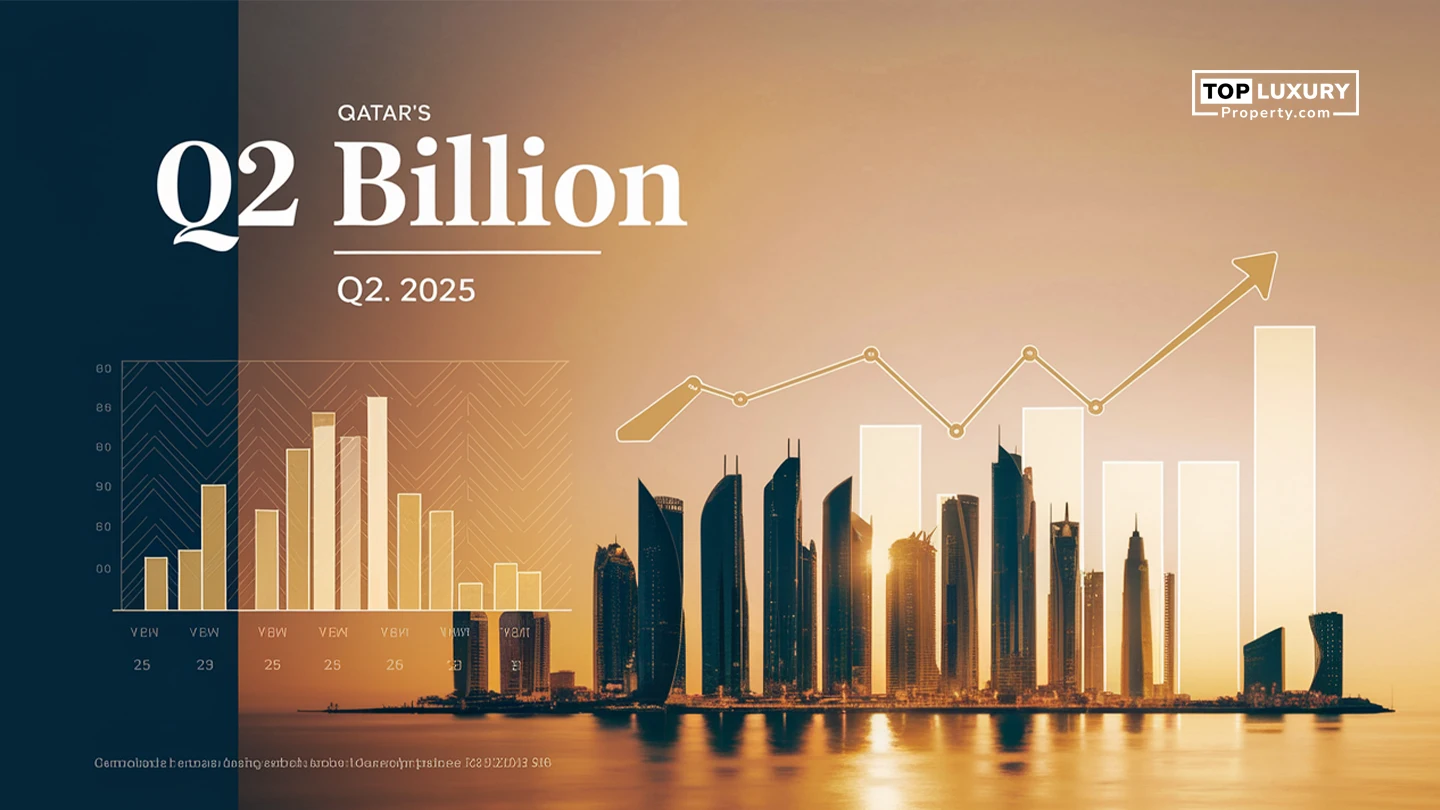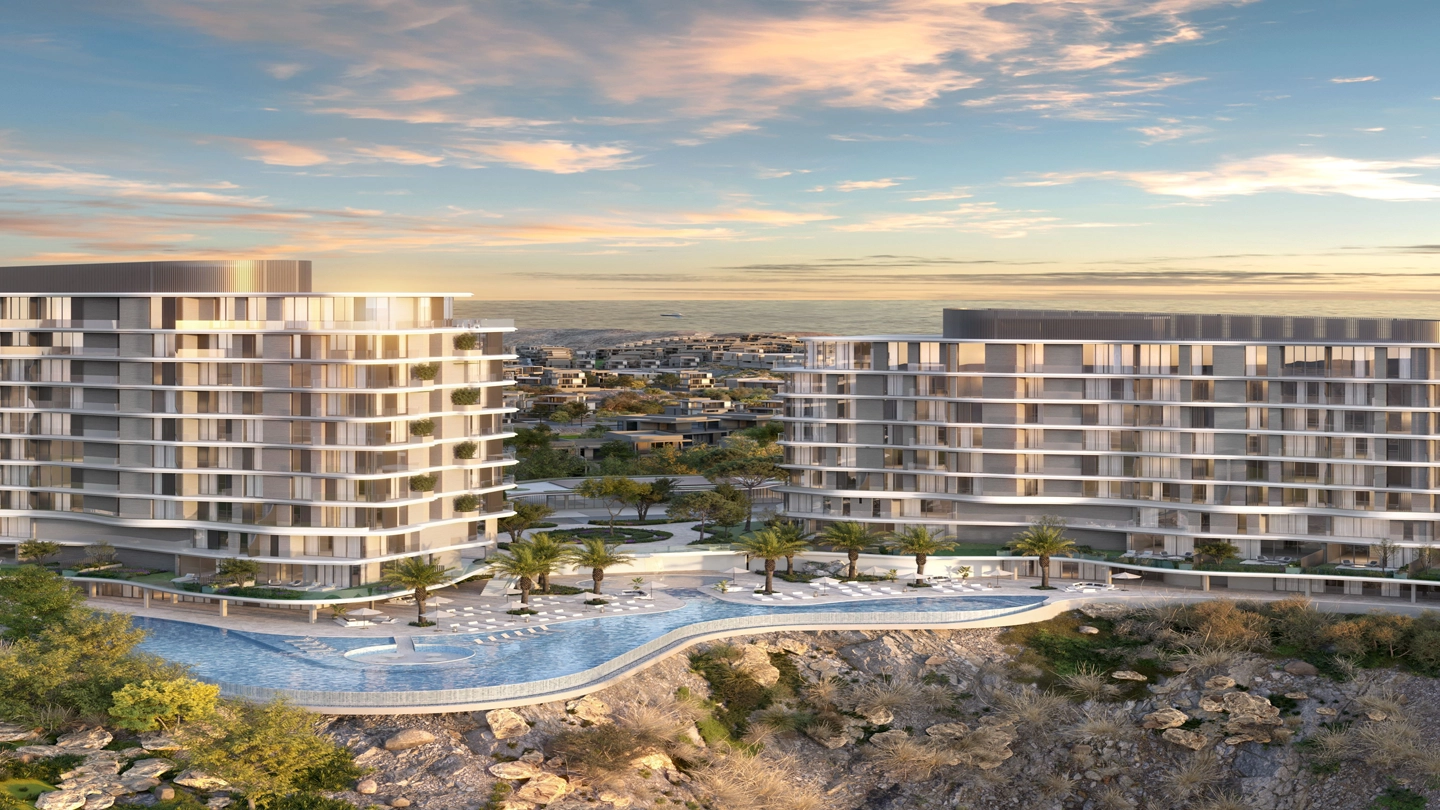Qatar’s Property Market Hits $2.4 Billion in Q2 2025
The rapid urbanization and innovative infrastructure planning in a market have made the Qatar property market continue gaining grounds. The newly published Real Estate Bulletin by Aqarat Qatar real estate Q2 2025 report showed that the total value of transactions was QR8.9 billion (~$2.4 billion), an increase of 29.8 percent year-on-year. This was the best quarter since the third quarter of 2020 with 1,915 transactions in various property segments indicating fresh investor confidence, rental activity and development activity around the country.
Qatar Real Estate Market Overview
Qatar Real Estate Market has been strong and vibrant in the year 2025, confirming its status as one of the most attractive investment environments in the Gulf region. This Q2 surge is more than a numerical victory in the sense that it highlights the rising investor interest and maturing ecosystem that is also being facilitated by regulatory transparency, digital transformation, and the country goal of Qatar National Vision 2030.
Doha is still the centre of action, dominating most of the transactions. The capital city recorded sales of about QR4.8 billion, and Al Rayyan at QR1.9 billion. These figures are indicators that the prime residential and business areas in Doha are still very attractive.
Key Transactions and Deals in Q2
The Qatar real estate Q2 2025 report indicated a profound 44% increase in volume of transactions in the market over the same period in the previous year. Notably:
- Residential Dominance: The number of residential transactions was 44% of the total transactions – which shows that demand in the family homes and the mid-income housing is still strong.
- The Pearl’s Appeal: The Pearl became the most desirable place, 266 sales, due to its waterfront lifestyle and luxury development.
- Lusail’s Rise: Lusail, the smart city of Qatar, came next with 125 transactions, further ensuring its emergence as a modern urban center.
- Top Performing Areas: Unit sales in Doha were 39.2%, Al Rayyan (18.2%) and Al Daayen (17.2%).
- Leasing Boom: The rental sector was also characterized by great vitality. The first six months of 2025 were characterized by 58,246 lease contracts which is a 26 percent year-on-year growth. The Al Wakrah Municipality had the greatest rental demand, especially in such neighborhoods as Al Wukair, Al Mashaf, and Al Thumama, which remain popular among tenants because of their affordable homes and the rising connectivity.
Factors Driving Real Estate Growth
The ongoing Qatar Real estate growth is not an accidental occurrence – there are a number of strategic reasons behind the boom:
- Government Investment: The investment in infrastructure by the government was according to the Qatar National Vision 2030, especially in transport, smart cities, and public amenities.
- Regulatory Improvements: Increased oversight systems and online registration systems have led to increased transparency in the market that has increased the confidence of investors.
- High-Quality Projects: The increasing popularity of Qatar real estate projects in The Pearl, Lusail, and Al Wakrah supported by high-quality designs and smart home technology.
- Rental Demand: Healthy rental market, where middle-income families, along with expats, are interested in value-oriented housing near schools and health centers and transportation hubs.
These factors have preconditioned the fact that Qatar has developed into a regional investment attraction point having originated as a developing real estate area.
Future Outlook for Qatar’s Property Sector
In the future, the Qatar real estate sector will gain long-term momentum. Aqarat predicts reasonable growth on the basis of:
- Secondary City Development: Increase in mixed-use growth in secondary cities
- Sustainable Housing: Smart and sustainable housing demand
- Foreign Investor Interest: Continuous interest of foreign investors, especially, GCC and Asian markets
- Tech Integration: Combining tech-driven property valuation with AI property platforms
There are no significant external shocks to anticipate in the future; therefore, the sector will continue to experience positive growth by the end of 2025. Regions such as Al Wakrah are likely to experience a faster development process as demand for residential spaces is absorbed there.
Final Thoughts
The Qatar real estate market has obviously reached a new stage of maturity and growth. With the QR8.9 billion in the Q2 transaction volume to the 58,000+ lease contracts in H1 2025, every indication is of a sound and well-diversified property ecosystem. Investors, developers, and residents, alike, can find a combination of stability, growth potential and long-term value in the property sector in Qatar.





_(2)_638647637563832478_820465_.webp)
